How to Measure and Improve Your Digital Marketing ROI
Summary: Digital marketing ROI is a crucial indicator of how effectively marketing efforts translate into revenue. It involves tracking key metrics like conversions, customer acquisition cost, and channel performance. Leveraging tools, AI, and data visualization helps uncover actionable insights. Focusing on high-performing channels and refining strategy with real-time data ensures smarter spending and sustainable growth.
Key Takeaways:
- ROI measures marketing effectiveness and financial return.
- Focus on conversions, CAC, CLV, and attribution for accurate ROI.
- AI enhances personalization, automation, and real-time performance tracking.
- Use GEO to optimize content for AI-driven search.
- Balance brand awareness with performance marketing for long-term gains.
Many businesses struggle to justify their digital marketing spend due to unclear performance metrics and inconsistent results. Without a clear understanding of ROI, marketing efforts often become guesswork leading to wasted budgets, poor targeting, and limited returns. This uncertainty not only affects campaign outcomes but also hinders long-term growth and decision-making.
Calculating digital marketing ROI helps eliminate this guesswork by identifying which strategies truly drive revenue. With accurate measurement, businesses can optimize campaigns, allocate budgets more effectively, and focus on channels that deliver the highest returns. Let’s break down how to measure and improve your ROI to ensure every rupee spent contributes to real, measurable success.
Table of Contents
Toggle- Understanding Digital Marketing ROI
- Why Digital Marketing ROI Matters for Businesses
- Key Metrics to Consider When Measuring ROI
- Leveraging Tools & Data Visualization
- Top Channels & Their ROI in 2025
- Features and Functionalities of Modern ROI Tools
- Strategies to Improve Your Digital Marketing ROI?
- Overcoming ROI Measurement Pitfalls
- The Role of AI & Emerging Tech
- Why Choose Agha DigiTech for ROI-Driven Marketing?
- Final Thoughts
- Frequently Asked Questions (FAQ's)
Understanding Digital Marketing ROI

Digital Marketing ROI (Return on Investment) is a key metric that helps evaluate the effectiveness of your digital marketing efforts. It measures the revenue generated in relation to the amount spent on marketing activities. A clear understanding of ROI enables businesses to assess performance, identify high-performing channels, and make informed decisions about where to invest their marketing budget.
The standard formula to calculate digital marketing ROI is:
ROI (%) = [(Revenue from Marketing – Cost of Marketing) / Cost of Marketing] × 100
In this formula, revenue from marketing refers to the total income generated directly from your digital campaigns such as sales from paid ads, SEO-driven leads, or conversions from email marketing. The cost of marketing includes all expenses related to your campaign, including ad spend, content creation, software tools, and team salaries.
Subtracting the cost from the revenue gives you the net profit, and dividing that profit by the total cost shows how efficiently your marketing is performing. Multiplying the result by 100 gives a percentage value, which makes it easier to evaluate and compare across different campaigns or channels.
For example, if you spend ₹1,00,000 on a campaign and generate ₹3,50,000 in revenue, the ROI would be [(₹3,50,000 – ₹1,00,000) / ₹1,00,000] × 100 = 250%. This means you earned ₹2.50 for every ₹1 spent. Understanding this concept is essential for refining your marketing strategy and ensuring that your investments deliver meaningful returns.
Why Digital Marketing ROI Matters for Businesses

Measuring ROI provides clarity on how well your digital marketing efforts are performing. It enables better decision-making, budget allocation, and campaign optimization. Without it, marketing strategies lack direction and accountability. Here’s why tracking ROI is crucial for business growth:
Financial Justification for Every Rupee Spent
Marketing budgets demand accountability. ROI offers clear proof of how each rupee spent contributes to business growth whether through sales, leads, or engagement. It equips marketing teams with data to back their strategies and justify investments to leadership. Instead of relying on assumptions, businesses can use ROI to show tangible results, improve transparency, and build confidence with stakeholders. This level of insight ensures resources are allocated to campaigns that actually deliver measurable returns.
Demonstrates Channel Effectiveness
Digital marketing involves multiple channels SEO, PPC, social media, email, and more. ROI highlights which of these deliver the best returns, making it easier to optimize your mix. It allows marketers to shift budgets away from underperforming platforms and double down on those that consistently generate revenue. By comparing performance across channels, businesses can make informed decisions, streamline marketing efforts, and avoid spreading resources too thin.
Boosts Long-Term Strategic Planning
ROI tracking supports not just immediate performance but also future planning. It uncovers patterns in customer behavior, seasonality, and campaign performance over time. With these insights, businesses can forecast results, plan budgets more effectively, and build strategies that support sustainable growth. ROI data also helps align marketing with business goals by focusing efforts on high-impact activities that contribute to long-term value rather than short-term gains alone.
Key Metrics to Consider When Measuring ROI
Calculating digital marketing ROI goes beyond just tracking revenue and spend. To get a complete picture of your campaign performance, you need to monitor multiple metrics that reveal how efficiently your marketing efforts are converting, the cost of those conversions, the value of each customer, and the influence of various channels. These metrics help you fine-tune strategies, allocate budgets wisely, and improve ROI over time.
Here’s a detailed table of the key metrics every business should consider when measuring digital marketing ROI:
Metric | Definition | Why It Matters |
Conversion Rate | Percentage of users who take a desired action (e.g., form fill, purchase) | Indicates how effectively your campaign turns visitors into leads or customers. |
Click-Through Rate (CTR) | Percentage of users who click on your ad/content after seeing it | Measures content or ad engagement; higher CTRs can lower ad costs and boost conversions. |
Customer Acquisition Cost (CAC) | Total cost to acquire a new customer (marketing spend ÷ new customers) | Helps you understand how efficiently you’re acquiring customers and how it impacts profitability. |
Return on Ad Spend (ROAS) | Revenue generated for every rupee spent on ads | Evaluates ad campaign effectiveness; a core metric for paid media performance. |
Customer Lifetime Value (CLV) | Total revenue a customer is expected to generate during their relationship | Shows long-term value of customers; useful for deciding how much to invest in acquisition and retention. |
Cost Per Click (CPC) | Amount paid each time a user clicks on a paid ad | Affects budget efficiency; lower CPC means more traffic for the same spend. |
Cost Per Lead (CPL) | Cost incurred to generate a single lead | Useful for tracking the quality and expense of lead-generation campaigns. |
Bounce Rate | Percentage of visitors who leave after viewing only one page | High bounce rates can signal poor landing page relevance or user experience. |
Attribution Model Insights | Tracks which touchpoints influence conversions (first-click, last-click, etc.) | Helps identify which channels and steps contribute most to conversions. |
Marketing-Generated Revenue | Total revenue that can be directly tied to marketing efforts | Links marketing efforts directly to business outcomes. |
Engagement Rate | Measures interactions (likes, shares, comments) relative to reach | Indicates how compelling your content is, especially in organic and social campaigns. |
Tracking these metrics consistently allows businesses to diagnose campaign performance accurately, reduce waste, and improve overall digital marketing ROI.
Leveraging Tools & Data Visualization
To truly understand and improve your digital marketing ROI, relying on spreadsheets alone won’t cut it. Modern tools and dashboards help you track real-time performance, visualize complex data, and make faster, smarter decisions. These tools simplify campaign analysis, highlight patterns, and present ROI insights in ways that are easy to understand, act upon, and share with stakeholders.
Here’s a breakdown of essential tools and how they support ROI measurement:
Tool/Platform | Primary Function | How It Supports ROI Tracking |
Google Analytics 4 (GA4) | Website & user behavior tracking | Offers insights into traffic sources, conversion paths, and campaign performance. |
Google Looker Studio | Data visualization & dashboarding | Converts raw marketing data into real-time, shareable dashboards for better decision-making. |
HubSpot Marketing Hub | CRM + automation + analytics | Tracks lead journeys, campaign effectiveness, and customer lifetime value across touchpoints. |
Semrush / Ahrefs | SEO performance tracking | Monitors keyword rankings, backlink ROI, and organic traffic impact on lead generation. |
Meta Ads Manager | Social ad campaign management | Provides ROAS, CTR, and detailed ad-level performance across Facebook and Instagram platforms. |
Google Ads Dashboard | Paid search and display campaign analytics | Tracks ad spend, conversions, ROAS, and keyword-level ROI for search and display campaigns. |
CRM Tools (e.g., Zoho, Salesforce) | Customer relationship tracking | Maps leads to revenue, connects marketing efforts to closed deals, and supports attribution. |
UTM Tracking Tools | Campaign-specific link tracking | Captures precise traffic sources to evaluate campaign-level ROI and performance. |
Hotjar / Crazy Egg | User experience heatmaps & behavior analytics | Visualizes user interactions to optimize conversion paths and reduce bounce rates. |
Power BI / Tableau | Advanced business intelligence & reporting | Combines marketing, sales, and finance data to deliver comprehensive ROI dashboards. |
By leveraging these tools effectively, businesses can move beyond guesswork and start making data-backed decisions that directly enhance their marketing ROI.
Top Channels & Their ROI in 2025
Not all digital marketing channels deliver the same return. In 2025, the shift toward AI-driven personalization, first-party data, and performance-focused campaigns has redefined which platforms bring the best results. Understanding the ROI potential of each channel helps businesses allocate budgets more efficiently and focus on high-impact marketing strategies that consistently drive revenue.
Email Marketing
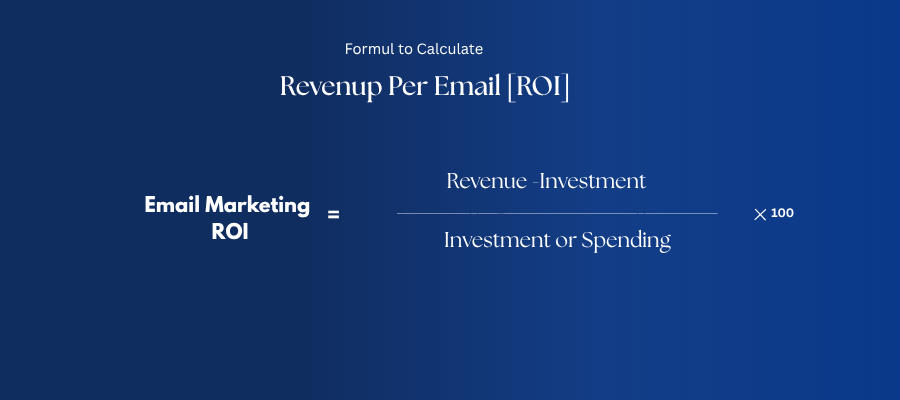
ROI Formula:
[(Revenue from Email – Email Campaign Costs) / Email Campaign Costs] × 100
Email marketing continues to deliver the highest ROI, with businesses earning ₹36–₹42 for every ₹1 spent. Thanks to AI-based personalization, triggered automation, and strong segmentation, email campaigns now drive more qualified leads and customer retention than ever before. It’s cost-effective, easy to scale, and perfect for nurturing both new and existing customers.
Search Engine Optimization (SEO)
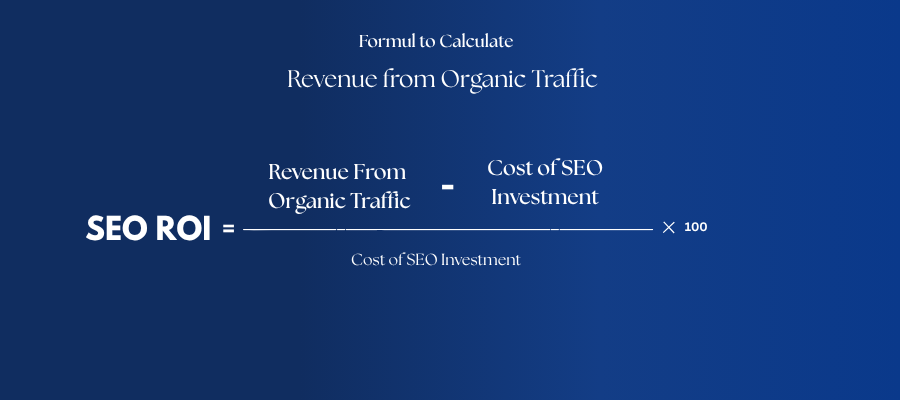
ROI Formula:
[(Revenue from Organic Traffic – SEO Costs) / SEO Costs] × 100
SEO offers powerful long-term ROI, often delivering ₹20–₹22 per ₹1 invested. Though it takes time to gain traction, once your content ranks, it generates continuous traffic without additional ad spend. In 2025, modern SEO focuses on AI search intent, voice search optimization, and technical improvements making it a core channel for sustainable growth.
Pay-Per-Click Advertising (PPC)
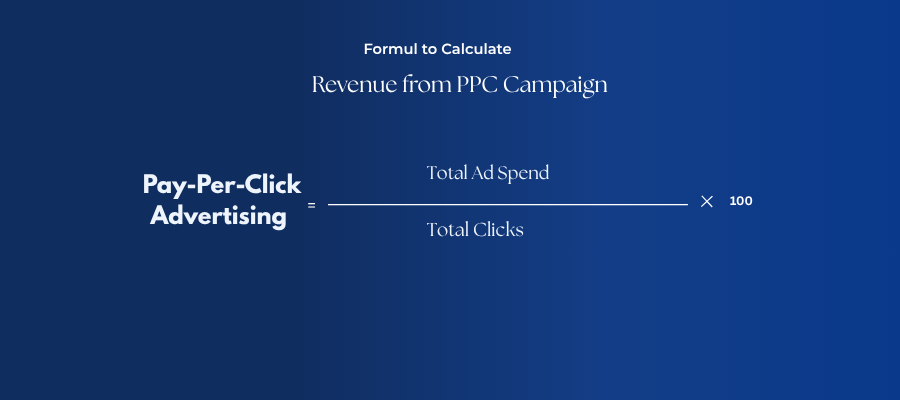
ROI Formula:
[(Revenue from PPC Campaign – PPC Spend) / PPC Spend] × 100
PPC provides immediate visibility and faster results. With ROAS averaging between 200% and 400%, platforms like Google Ads and Bing remain go-to options for time-sensitive campaigns. Advanced targeting, automated bidding, and keyword optimization tools make it easier to control budgets while maximizing conversions and measurable returns.
Social Media Marketing
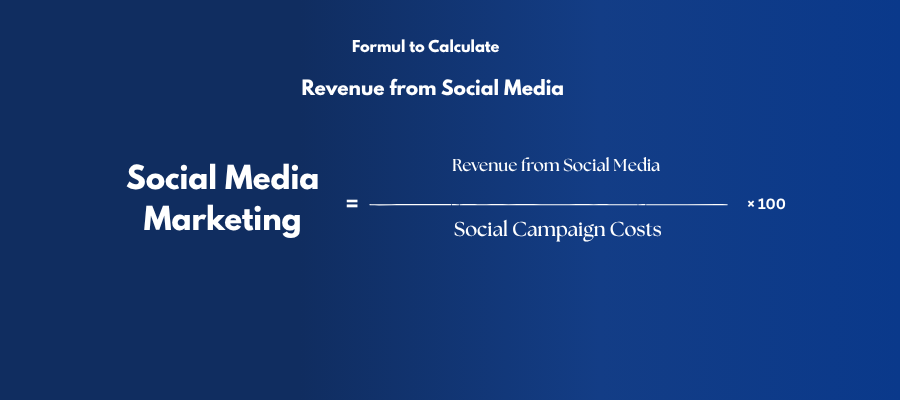
ROI Formula:
[(Revenue from Social Media – Social Campaign Costs) / Social Campaign Costs] × 100
Social media ROI varies across platforms but continues to grow due to AI-driven audience targeting and content personalization. Instagram, LinkedIn, and Facebook remain top performers in 2025, especially for video content and influencer partnerships. Businesses typically see ROIs of 150–300%, depending on content quality, engagement, and targeting strategy.
Affiliate Marketing
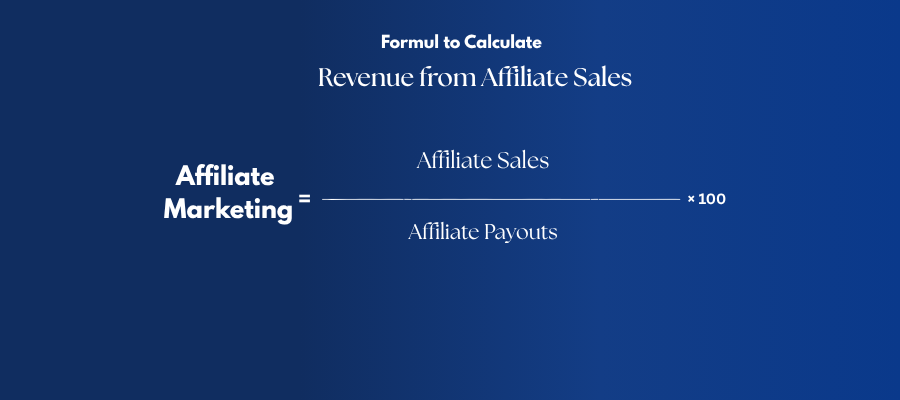
ROI Formula:
[(Revenue from Affiliate Sales – Affiliate Payouts) / Affiliate Payouts] × 100
Affiliate marketing ensures low-risk, performance-based returns by paying only for actual conversions. It delivers ₹12–₹15 per ₹1 spent and works well in eCommerce, fashion, and tech. In 2025, affiliate programs benefit from better tracking tools and stronger partner relationships, making it a high-efficiency revenue channel.
Content Marketing
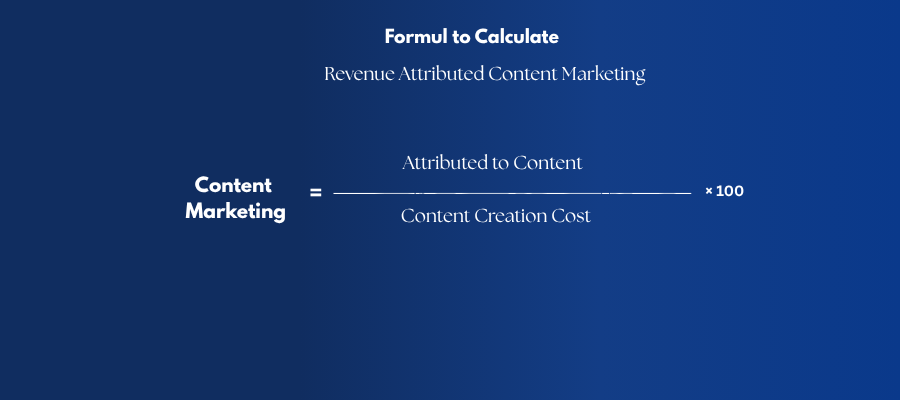
ROI Formula:
[(Revenue Attributed to Content – Content Creation Cost) / Content Creation Cost] × 100
Content marketing supports long-term traffic, lead nurturing, and SEO efforts. Though slower to produce immediate returns, it delivers lasting value with ROI improving over time. With AI-assisted content creation, topic clusters, and interactive formats gaining popularity, brands are using content to build trust, generate leads, and establish authority across all stages of the funnel.
Features and Functionalities of Modern ROI Tools
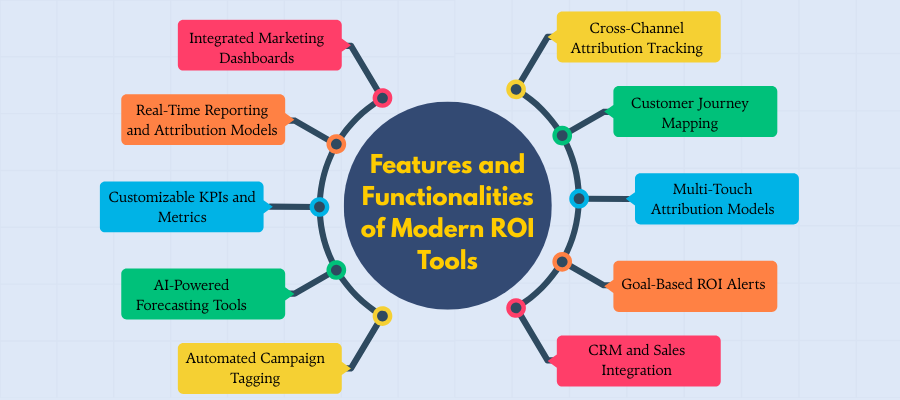
Modern ROI tools have evolved to offer far more than basic tracking. In 2025, they come packed with intelligent features that streamline reporting, simplify attribution, and enhance data accuracy. These functionalities empower marketers to make smarter, faster decisions while ensuring every campaign is aligned with measurable outcomes.
- Integrated Marketing Dashboards: Consolidate data from multiple channels into a single, real-time view for better analysis and decision-making.
- Real-Time Reporting and Attribution Models: Provide instant insights on campaign performance and identify which touchpoints drive conversions.
- Customizable KPIs and Metrics: Allow users to track ROI based on business-specific goals, not just generic benchmarks.
- AI-Powered Forecasting Tools: Predict future campaign performance using historical data and machine learning algorithms.
- Automated Campaign Tagging: Ensures consistent UTM tagging for accurate source and medium tracking.
- Cross-Channel Attribution Tracking: Connects the dots between customer interactions across email, ads, social, and more.
- Customer Journey Mapping: Visualizes how users engage across channels before converting, helping refine funnels.
- Multi-Touch Attribution Models: Attribute value to every touchpoint in a user’s journey, not just the first or last.
- Goal-Based ROI Alerts: Sends real-time notifications when campaign performance drops below or exceeds targets.
- CRM and Sales Integration: Links marketing performance directly to lead quality and closed deals.
Strategies to Improve Your Digital Marketing ROI?
Digital marketing ROI doesn’t improve by chance it requires strategic, data-backed approaches. In 2025, the convergence of AI, automation, and personalization enables more precise and scalable marketing tactics. Below are the top trending strategies marketers are using to amplify ROI, backed by the latest insights:
Hyper-Personalization Powered by AI
AI-driven personalization goes beyond basic segmentation to customize every touchpoint emails, ad creative, and site content to individual user behaviors and preferences. Marketers using generative AI engines, predictive analytics, and dynamic creative are seeing significantly higher engagement, open rates, and conversion lift. Platforms like Taco Bell report reduced churn, while beauty brands using hyper-personalization have boosted ROAS by up to 25%.
AI-Powered Automation and Predictive Analytics
Modern ROI tools offer AI-led automation smart bidding, funnel optimization, segment scoring, and real-time insights. Predictive algorithms anticipate which audience segments are most likely to convert, enabling timely campaign adjustments. Nearly 65% of senior execs agree AI is driving growth in 2025, with 53% reporting improved team efficiency and faster content production.
Generative Engine Optimization (GEO)
With generative AI search engines rising, brands are optimizing content specifically for AI-powered responses using GEO tactics like structured meta data, AI-friendly content, and prompts. Early adopters are gaining visibility within AI-driven answer platforms like ChatGPT and Google SGE, driving new referral traffic and brand discovery.
Dynamic Creative & Real-Time A/B Testing
Marketers are deploying dynamic ads that adjust messaging, images, and CTAs in real time based on user data. Combined with constant A/B testing headlines, formats, channel mixes they can immediately refine campaigns. Firms report 30% improved conversion rates, thanks to the agility and responsiveness of these systems.
Short-Form Video & Interactive Content
Engagement-first formats like TikTok/Instagram Reels, quizzes, polls, and AR experiences are reshaping ROI trends. Short-form video sees high shareability and attention, while interactive formats deepen user involvement and data capture. These formats not only boost engagement but also drive measurable conversions when tied back into the funnel.
Focus on Revenue-Generating Channels
Rather than spreading your marketing budget across too many platforms, prioritize channels that consistently deliver the highest returns. In 2025, email marketing, SEO, and PPC continue to outperform others in terms of ROI. Use attribution data and performance dashboards to identify your top-performing sources and double down on them. Focusing resources on what already works not only improves efficiency but also maximizes revenue with less effort and spend.
By combining these strategies AI-led personalization, automation, GEO, dynamic creative, and engaging formats you can significantly elevate your ROI in 2025 and beyond.Lorem ipsum dolor sit amet, consectetur adipiscing elit. Ut elit tellus, luctus nec ullamcorper mattis, pulvinar dapibus leo.
Overcoming ROI Measurement Pitfalls
Struggling to accurately track ROI can undermine your marketing efforts and supplier confidence. In 2025’s rapidly evolving landscape driven by privacy rules, fragmented data, and outdated measurement approaches it’s vital to address common pitfalls. By understanding and fixing these issues, you gain clarity, trustworthiness, and stronger ROI insights.
- Data Fragmentation: Siloed systems obscure customer journeys and hide revenue; unified tracking boosts ROI visibility by over 20%.
- Over-Reliance on Vanity Metrics: Metrics like reach and likes don’t equal revenue. Focus instead on lead conversion, CAC, CLV, and channel-specific ROI.
- Inaccurate Attribution: Single-touch models mislead. Use multi-touch or MMM to assign revenue accurately across all channels.
- Cookie-Dependent Tracking: As third-party cookies fade, tracking falters. Replace with first-party data, contextual targeting, and predictive modeling.
- Unaccounted Costs: Ignoring indirect expenses (tools, salaries, content) inflates ROI. Include full cost stack for precise measurement.
- No Long-Term Perspective: Short-term immediate wins mask brand-building impact. Use MMM and extended performance tracking to capture full ROI.
Addressing these issues ensures your measurements are trustworthy, actionable, and aligned with real business outcomes.
The Role of AI & Emerging Tech

AI and emerging technologies are fundamentally reshaping how marketers measure and enhance digital marketing ROI in 2025. From automation to predictive analytics, these innovations eliminate guesswork and bring unmatched precision to campaign planning, targeting, and performance tracking.
AI tools now power everything from customer segmentation to dynamic content creation. Marketers can personalize experiences at scale, predict user behavior, and optimize ad spend in real-time. AI-driven algorithms help identify high-value audiences, automate A/B testing, and forecast campaign results before launch reducing wasted spend and increasing efficiency.
Emerging technologies like machine learning-enhanced analytics, voice search optimization, and generative engine optimization (GEO) are also contributing to higher ROI. With the decline of third-party cookies, AI helps marketers transition to first-party data strategies that maintain accuracy and comply with privacy regulations.
Advanced attribution models, powered by machine learning, now map complete customer journeys across multiple channels providing deeper insight into what actually drives conversions. As businesses embrace these technologies, they gain a competitive edge, making smarter, faster decisions that directly improve their marketing ROI and overall growth trajectory.
Why Choose Agha DigiTech for ROI-Driven Marketing?
Tired of pouring money into marketing with no clear results? You’re not alone. Many businesses struggle to connect strategy with measurable outcomes but that’s where Agha DigiTech makes the difference. We focus on what truly matters: turning your marketing spend into revenue.
Our ROI-first approach means every campaign is backed by real-time data, precision targeting, and custom KPIs tailored to your goals. We don’t believe in vanity metrics we believe in conversions, sales, and growth. With fully transparent reporting dashboards and performance breakdowns, you’ll always know where your money is going and what it’s bringing back.
From SEO and paid media to content, web, and automation, our in-house teams collaborate to build cohesive strategies that deliver consistent returns. Whether you’re scaling a startup or optimizing an enterprise funnel, Agha DigiTech helps you spend smarter, perform better, and grow faster all with a strategy rooted in ROI.
Final Thoughts
Maximizing your digital marketing ROI is no longer a luxury it’s a necessity for sustainable growth in today’s competitive landscape. From choosing the right channels to leveraging AI and tracking real-time performance, every decision should be driven by data and value. Agha DigiTech empowers your business with end-to-end ROI-focused strategies that go beyond impressions to deliver real, measurable outcomes. Whether it’s SEO, paid ads, content marketing, or automation, we help you align every campaign with your business goals.
Ready to stop wasting budget and start generating better returns? Contact Agha DigiTech today and let our experts craft ROI-driven campaigns that accelerate your success.
Frequently Asked Questions (FAQ's)
What is a “good” ROI for digital marketing?
A good ROI typically falls around a 5:1 ratio, meaning you earn ₹5 for every ₹1 spent. This is considered healthy and sustainable. Exceptional campaigns, particularly those leveraging automation and AI personalization, can reach up to 10:1 or higher, depending on industry, campaign objectives, and channel efficiency.
What’s the downside of vanity metrics?
Vanity metrics like likes, views, and followers may look impressive but rarely correlate with revenue or conversions. They can mislead marketers into believing campaigns are successful. To gauge true performance, prioritize actionable KPIs such as customer acquisition cost (CAC), conversion rate, and ROI-specific metrics that align directly with business goals.
Should I use multi-touch attribution?
Yes. Multi-touch attribution models give credit to multiple touchpoints in a buyer’s journey rather than just the first or last interaction. This provides a clearer, more accurate view of how your marketing channels contribute to conversions, enabling better budget allocation and strategic adjustments across the full customer lifecycle.
How do I benchmark ROI across industries?
ROI benchmarks vary by industry and channel. For example, email marketing averages 3600%, SEO around 825%, and Google Ads between 200–400%. Use these as general indicators, but always track your own performance over time. Platforms like HubSpot, Statista, and Think with Google offer regularly updated industry-specific ROI benchmarks.Lorem ipsum dolor sit amet, consectetur adipiscing elit. Ut elit tellus, luctus nec ullamcorper mattis, pulvinar dapibus leo.
How important is balancing brand and performance budgets?
Balancing both is critical. Research shows a 60/40 split between brand-building and performance marketing delivers optimal long-term ROI. Brand awareness supports future conversions, while performance marketing drives immediate results. Neglecting one in favor of the other limits your growth potential and shortens the life cycle of your marketing impact.Lorem ipsum dolor sit amet, consectetur adipiscing elit. Ut elit tellus, luctus nec ullamcorper mattis, pulvinar dapibus leo.




